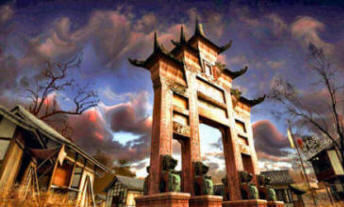|
|
|
|
|
|
|
 |
 |
 |
|
Art Gallery
| |
Welcome to the Art Gallery. Here artists
from the East and the West will come together and define "Art".
Artworks from famous Chinese Artists, European Artists, and also
local artists will be shown. We hope you enjoy this site and
please feel free to contact the local artists regarding their
paintings.

|
|
|
|
|
Art
History Movements:
The Baroque Era
Europe, 17th Century
Baroque Art developed in Europe
around 1600, as an reaction against
the intricate and formulaic
Mannerism that dominated the Late
Renaissance. Baroque art is less
complex, more realistic and more
emotionally affecting than Mannerist
art.
This movement was encouraged by the
Catholic Church, the most important
patron of the arts at that time,
being seen as a return to tradition
and spirituality.
Romanticism
Late 18th Century to Mid 19th
Century
Romanticism might best be
described as anticlassicism. A
reaction against Neoclassicism,
it is a deeply-felt style which
is individualistic, exotic,
beautiful and emotionally
wrought.
Although Romanticism and
Neoclassicism were
philosophically opposed, they
were the dominant European
styles for generations, and many
artists were affected to a
lesser or greater degree by
both. Artists might work in both
styles at different times or
even combine elements, creating
an intellectually Romantic work
using a Neoclassical visual
style, for example.
|
Expressionism
Centered in
Germany, C.1905 to
1940's
Expressionism is a
style in which the
intention is not to
reproduce a subject
accurately, but
instead to portray
it in such a way as
to express the inner
state of the artist.
The movement is
especially
associated with
Germany, and was
influenced by such
emotionally-charged
styles as
Symbolism,
Fauvism, and
Cubism.
|
|
Contemporary
Realism
America, Emerged
in the Late
1960's/Early 1970's
Contemporary Realism
is the
straightforward
realistic approach
to representation
which continues to
be widely practiced
in this
post-abstract era.
It is different from
Photorealism, which
is somewhat
exaggerated and
ironic and
conceptual in its
nature.
Contemporary
Realists form a
disparate group, but
what they share is
that they are
literate in the
concepts of Modern
Art but choose to
work in a more
traditional form.
Many Contemporary
Realists actually
began as abstract
painters, having
come through an
educational system
dominated by an
professors and
theorists dismissive
of representational
painting.
|
|
|
|
|
|
|
|
|



